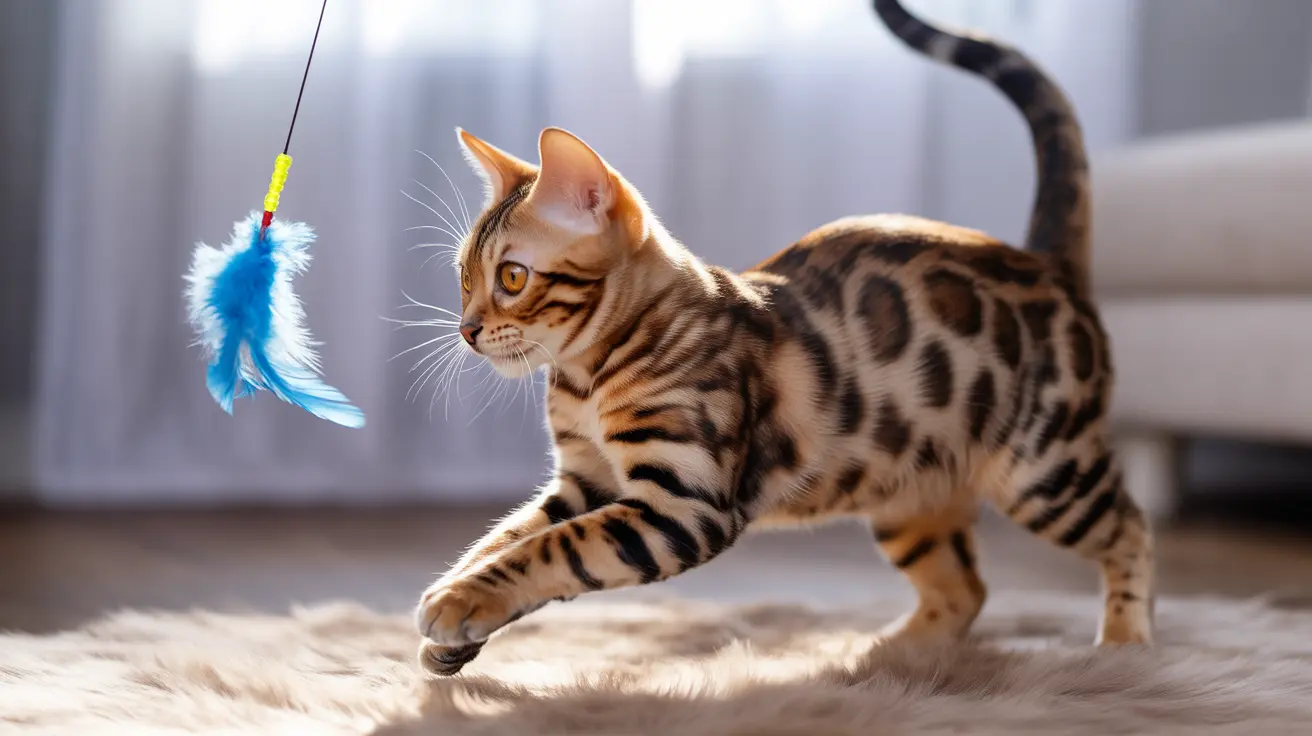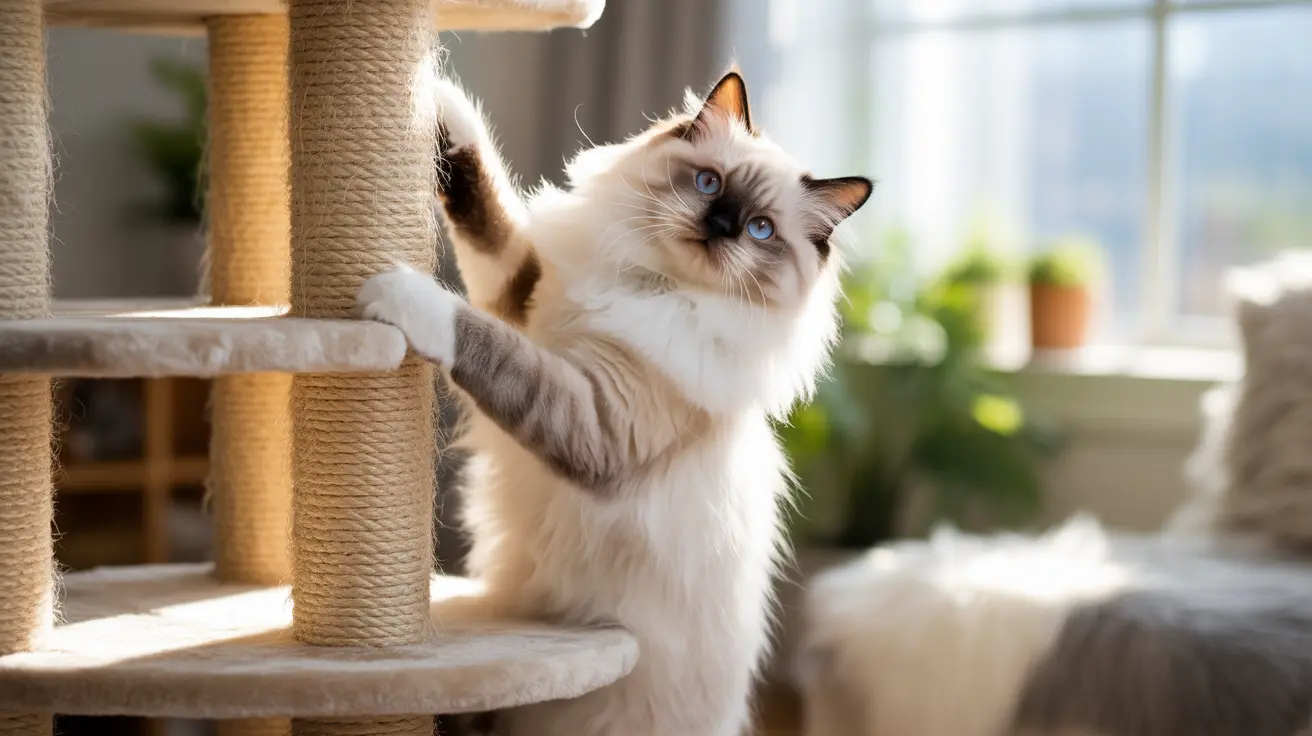How to Satisfy Indoor Cat Hunting Instinct: Complete Guide to Engaging Your Feline's Natural Behaviors
Indoor cats are fascinating creatures that carry within them the same powerful hunting instincts as their wild ancestors. Despite being removed from the natural environment where these behaviors evolved, domestic cats retain an intense prey drive that demands fulfillment. Understanding how to satisfy indoor cat hunting instinct is crucial for maintaining your feline companion's mental health, preventing behavioral problems, and ensuring they live a truly enriched life within the safety of your home.
As obligate carnivores and born predators, cats possess an innate need to hunt that goes far beyond simple hunger. When these natural instincts aren't properly channeled through appropriate activities and enrichment, indoor cats can develop boredom, stress, and destructive behaviors that impact both their wellbeing and your household harmony. The good news is that with the right approach to play, toys, and environmental enrichment, you can create a stimulating indoor environment that satisfies your cat's deepest instinctual needs while keeping them safe and healthy.
Understanding Your Cat's Natural Hunting Instincts
Cats have evolved as skilled predators with behaviors such as stalking, hunting, and scratching deeply embedded in their genetic makeup. These instinctual behaviors are enriching activities that indoor cats need to practice regularly, even when they have no actual prey to pursue. The hunting instinct encompasses much more than simply catching prey – it includes the entire sequence of stalking, pouncing, catching, and the satisfaction that comes from a successful hunt.
Indoor cats that only "hunt" their food dish often experience boredom and may develop behavioral issues as a result of unfulfilled instinctual needs. Even well-fed cats do not lose their hunting instincts, as the drive to hunt remains as a natural behavior and source of mental stimulation. Individual cats vary in how actively they express hunting behavior, but all cats benefit from opportunities to engage these natural tendencies through appropriate activities and environmental enrichment.
Interactive Toys: Your Cat's Substitute Prey
Interactive toys serve as substitute prey and are essential tools for helping satisfy indoor cat hunting instinct. These toys fall into several categories, each offering unique benefits for engaging your cat's natural behaviors. Wand toys and feather toys are particularly effective because they allow you to control the movement, simulating the erratic motions of actual prey animals.
When using interactive toys, it's important to move them in ways that mimic real animals – quick, unpredictable movements that trigger your cat's chase response. Fishing rod-style toys with various attachments can keep play sessions exciting and engaging. The key is to ensure your cat occasionally catches the toy during play sessions to provide the satisfaction of a successful hunt and prevent frustration.
Best Interactive Toy Options
Feather wands and fishing rod toys are among the most effective interactive options because they simulate prey movement and allow for extended play sessions. Small plush toys, catnip mice, and motorized toys can also provide excellent hunting simulation. Electronic or motion toys can entertain energetic cats when owners are away, but these should be rotated regularly and their setup adjusted to maintain interest over time.
Strategic Toy Rotation and Selection
Not all toys should be available to your cat at all times. Rotating toys periodically prevents boredom and encourages continued exploration and engagement. This strategy keeps toys novel and interesting, maintaining your cat's interest in hunting activities over the long term. Consider donating old toys to shelters when introducing new ones to keep your cat's toy collection fresh and exciting.
When selecting toys, consider that natural-colored, uncolored options are often preferable to brightly colored ones, as this minimizes chemical exposure during play. Many cats also show greater interest in homemade toys made from simple household items like walnut shells, ping pong balls, or corks, which often provide more enjoyment than expensive store-bought alternatives.
Laser Pointers: Use With Caution
Laser pointers can be excellent tools for engaging your cat's hunting instinct, but they require careful use to be truly effective and safe. While great for encouraging chase behavior and providing exercise, laser pointer play should always end with a tangible toy that your cat can actually catch. This prevents frustration that can arise from never being able to physically capture the "prey."
Always use laser pointers cautiously to avoid eye damage, and never shine them directly into your cat's eyes. The key is to use the laser to encourage movement and engagement, then transition to a physical toy that provides the satisfaction of a successful capture.
Creating a Hunt-Eat-Groom-Sleep Cycle
Interactive play before meals can effectively mimic the natural hunt-eat-groom-sleep cycle that cats would experience in the wild. This approach triggers appetite and provides satisfaction that goes beyond simply filling their food bowl. Short play sessions before feeding encourage both exercise and mental engagement while establishing a routine that aligns with your cat's natural instincts.
Consider feeding smaller, more frequent meals to better mimic natural feeding patterns. This approach, combined with pre-meal play sessions, helps create a more natural rhythm for your indoor cat and ensures their hunting instincts are regularly engaged throughout the day.
Food-Based Hunting Activities
Puzzle feeders and treat-dispensing toys provide excellent opportunities to satisfy indoor cat hunting instinct while making mealtime more engaging. These tools stimulate your cat's problem-solving skills and mimic the hunting process required to obtain food in the wild. Use kibble or freeze-dried treats in puzzle feeders or treat balls that require hunting activity to access the food inside.
Simple DIY options can be just as effective as expensive commercial products. Cardboard boxes with holes cut in them can hide food pieces and stimulate natural foraging behaviors. These hunting games help keep indoor cats mentally stimulated and more content with their indoor lifestyle.
Environmental Enrichment for Natural Behaviors
Beyond toys, creating an environment that supports natural hunting behaviors is crucial for indoor cats. High perches and vertical spaces offer cats a sense of security and provide elevated vantage points from which they can observe their surroundings – mimicking the natural advantage that height provides to wild cats when hunting.
Window perches allow cats to watch outdoor sights and sounds, which can satisfy some aspects of their hunting desire while providing mental stimulation. Bird or squirrel feeders placed outside windows can enhance this entertainment, though it's important to monitor for signs of frustration or excessive excitement that might indicate your cat needs more physical hunting outlets.
Creating Hiding and Stalking Opportunities
Cats naturally seek hiding spots from which to observe potential prey, and providing these spaces supports their hunting instincts. Cat tunnels, cubes, boxes, and covered beds offer privacy and create opportunities for stalking games. These hideouts serve dual purposes – providing security and rest while also facilitating natural hunting behaviors during play sessions.
Daily Play Routines and Best Practices
Daily structured play sessions with interactive toys are essential for maintaining your cat's mental and physical health. These sessions should be engaging and allow your cat to experience the full hunting sequence from stalking through capture. Always ensure your cat "wins" occasionally during play to prevent frustration and maintain their interest in hunting activities.
The timing and structure of play sessions matter significantly. Short, frequent sessions throughout the day are often more effective than one long session. Pay attention to your cat's energy levels and preferences – some cats are more active in the morning, while others prefer evening hunt sessions that align with their natural crepuscular activity patterns.
Recognizing Your Cat's Individual Needs
Each cat expresses hunting behavior differently, and understanding your individual cat's preferences is key to successfully satisfying their instincts. Some cats prefer fast-moving targets, while others enjoy slower, methodical stalking opportunities. Observe your cat's natural play style and adjust your approach accordingly.
Watch for signs that indicate your cat's hunting needs are being met: relaxed behavior, healthy appetite, normal sleep patterns, and minimal destructive behavior. Conversely, excessive meowing, destructive scratching, or aggressive behavior toward other pets might indicate that hunting instincts aren't being adequately fulfilled.
Frequently Asked Questions
- How often should I engage my indoor cat in hunting play?
Daily interactive play sessions are recommended to properly satisfy indoor cat hunting instinct. Short sessions of 5-10 minutes, 2-3 times per day, are typically more effective than one longer session. Pay attention to your cat's energy levels and adjust frequency accordingly.
- Can laser pointers be harmful to my cat?
Laser pointers can be safe when used properly, but they require caution to avoid eye damage. Always end laser pointer sessions with a tangible toy your cat can catch to prevent frustration from never capturing the "prey." Never shine the laser directly into your cat's eyes.
- What types of homemade toys work best for hunting play?
Simple household items like ping pong balls, walnut shells, corks, and cardboard boxes with holes often provide more enjoyment than expensive store-bought toys. Always supervise homemade toy play to ensure your cat doesn't ingest any hazardous materials.
- How do I know if my cat is getting enough hunting stimulation?
Signs of adequate hunting stimulation include relaxed behavior, healthy appetite, normal sleep patterns, and minimal destructive behavior. Excessive meowing, destructive scratching, or aggressive behavior toward other pets might indicate unfulfilled hunting instincts.
- Should I leave all hunting toys available all the time?
No, rotating toys prevents boredom and maintains your cat's interest. Keep some toys stored away and rotate them regularly to ensure novelty and continued engagement with hunting activities.
- Are puzzle feeders really effective for indoor cats?
Yes, puzzle feeders and treat-dispensing toys effectively stimulate problem-solving skills while mimicking the natural hunting process for food. They're excellent tools for combining feeding time with instinct satisfaction.
- What's the best way to introduce hunting play to an older or shy cat?
Start with gentle, slow movements and shorter play sessions. Use quieter toys initially and gradually introduce more stimulating options as your cat becomes comfortable. Allow the cat to approach and investigate toys at their own pace before engaging in active play.
Conclusion
Successfully learning how to satisfy indoor cat hunting instinct requires understanding that these behaviors are not optional luxuries but essential needs for your feline companion's wellbeing. Through thoughtful selection of interactive toys, strategic play sessions, environmental enrichment, and food-based hunting activities, you can create an indoor environment that fully engages your cat's natural predatory instincts while keeping them safe and healthy.
Remember that each cat is unique in how they express and satisfy their hunting needs. By observing your cat's preferences, maintaining consistent daily play routines, and providing variety in hunting opportunities, you can ensure your indoor cat lives a fulfilling, enriched life that honors their wild heritage while enjoying the safety and comfort of home.






